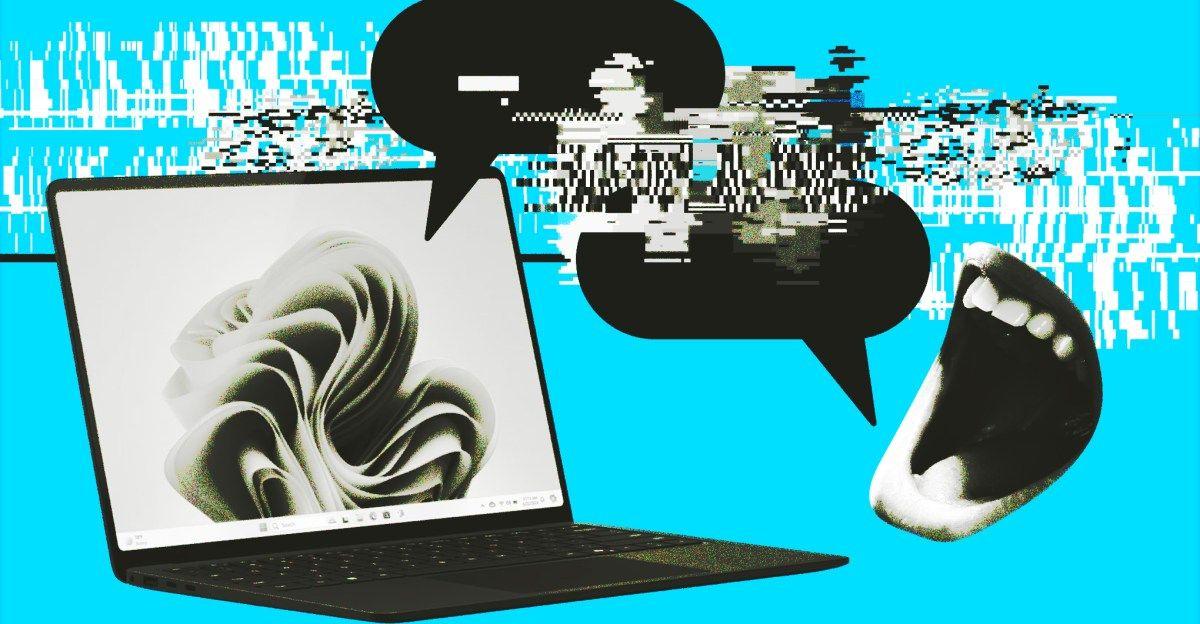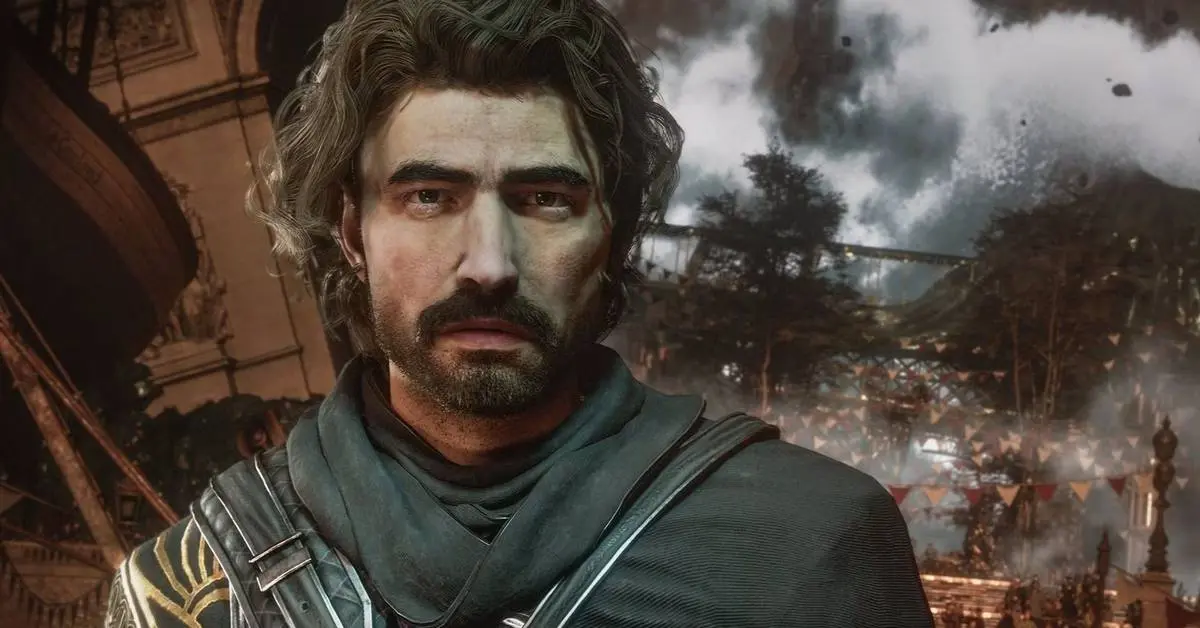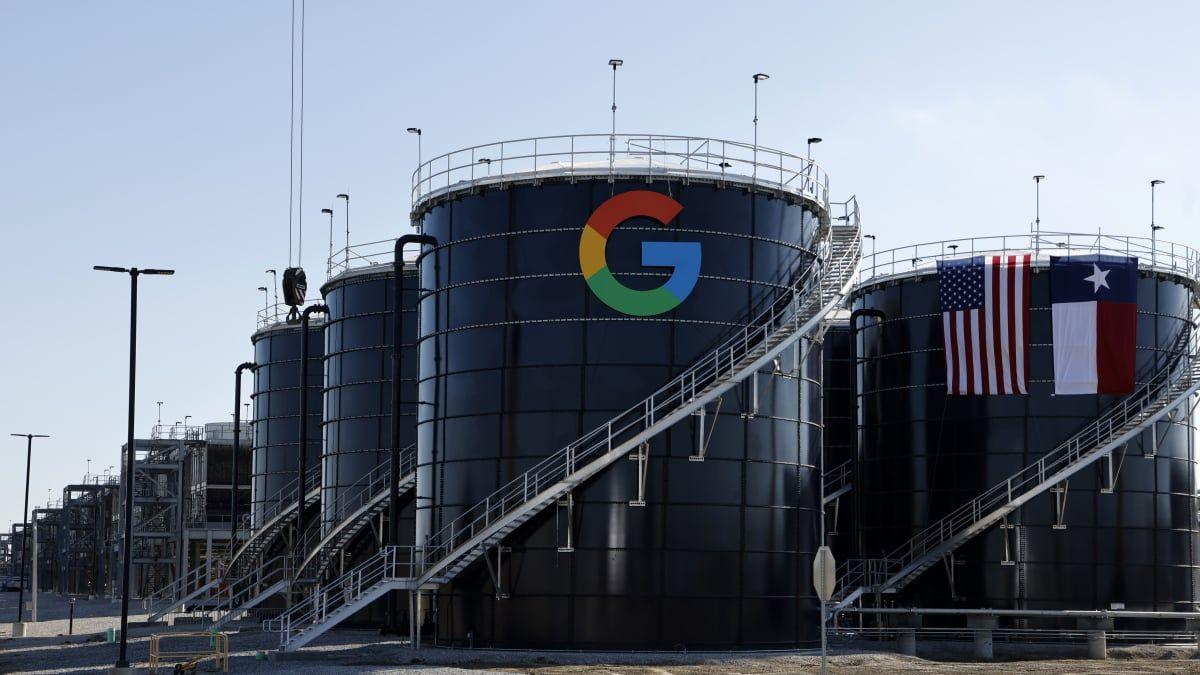Microsoft's AI-Generated Surface Ad Goes Unnoticed for Months
5 Sources
5 Sources
[1]
Microsoft made an ad with generative AI and nobody noticed
Dominic Preston is a news editor with over a decade's experience in journalism. He previously worked at Android Police and Tech Advisor. Microsoft has revealed that it's created a minute-long advert for its Surface Pro and Surface Laptop hardware using generative AI. But there's a twist: it released the ad almost three months ago, and no-one seemed to notice the AI elements. The ad, which went live on YouTube on January 30th, isn't entirely made up of generated content. In a Microsoft Design blog post published Wednesday, senior design communications manager Jay Tan admits that "the occasional AI hallucination would rear its head," meaning the creators had to correct some of the AI output and integrate it with real footage. "When deciding on which shots within the ad were to be AI generated, the team determined that any intricate movement such as closeups of hands typing on keyboards had to be shot live," Tan says. "Shots that were quick cuts or with limited motion, however, were prime for co-creation with generative AI tools." Microsoft hasn't specified exactly which shots were generated using AI, though Tan did detail the process. AI tools were first used to generate "a compelling script, storyboards and a pitch deck." Microsoft's team then used a combination of written prompts and sample images to get a chatbot to generate text prompts that could be fed into image generators. Those images were iterated on further, edited to correct hallucinations and other errors, and then fed into video generators like Hailuo or Kling. Those are the only specific AI tools named by Tan, with the chatbots and image generators unspecified. "We probably went through thousands of different prompts, chiseling away at the output little by little until we got what we wanted. There's never really a one-and-done prompt," says creative director Cisco McCarthy. "It comes from being relentless." That makes the process sound like more work than it might have been otherwise, but visual designer Brian Townsend estimates that the team "probably saved 90% of the time and cost it would typically take." The process echoes recent comments from Microsoft's design chief Jon Friedman to my colleague Tom Warren, that AI is going to become one more tool in creatives' arsenals, rather than replacing them outright. As Friedman puts it, "suddenly the design job is how do you edit?" Despite the fact that the video has been online for almost three months, there's little sign that anyone noticed the AI output until now. The ad has a little over 40,000 views on YouTube at the time of writing, and none of the top comments speculate that the video was produced using AI. Knowing that AI was involved, it's easy enough to guess where -- shots of meeting notes that clearly weren't hand-written, a Mason jar that's suspiciously large, the telling AI sheen to it all -- but without knowing to look for it, it's clear that plenty of viewers couldn't spot the difference. The ad's quick cuts help hide the AI output's flaws, but suggest that in the right hands, AI tools are now powerful enough to go unnoticed.
[2]
Microsoft Released an AI-Generated Ad and People Didn't Realize
Microsoft released a minute-long ad for its Surface Pro and Surface Laptop with generative AI and nobody noticed until the company pointed it out. In a blog post published last week, Microsoft explains that the advert (below) was released three months ago and the team behind it used chatbots, AI image generators, and AI video tools to bring the spot to life. The video follows a series of top-down shots looking at different people working in various environments. Pausing the video to take a closer look at some of the individual shots reveals AI artifacts, but the way the video is edited -- with fast transitions -- makes them barely perceptible when viewing at full speed. This was an intentional creative decision made by Microsoft's Visual Design Team Brian Townsend and Cisco McCarthy who chose AI-generated clips with limited motion to hide any weird AI artifacts as much as possible. The team determined that any intricate movement such as closeups of hands typing on keyboards had to be shot live, according to Microsoft. "The team employed a blend of AI and traditional video production tools to meticulously compose frames and correct any unnatural elements," reads Microsoft's blog post. "Each frame was carefully curated, removing anything that looked weird and out of place, and ensuring only the most compelling elements remained. Additionally, the team made a conscious effort to use top-down shots to limit hallucinations and maintain visual coherence." Part of the reason the design team turned to AI is because of the short turnaround on the ad; just one month. After generating a still image they liked, the team would use generative AI video apps like Hailuo or Kling to add motion. "With a small budget and a tiny amount of time, we were able to accomplish in a month what would have traditionally required exponentially more resources. We probably saved 90% of the time and cost it would typically take," says Townsend. Microsoft says that AI also allowed the team to experiment with more ideas and explore more locations. "The faster we can make something move, the more creative freedom it gives us," adds Townsend. The Verge notes that despite the fact the ad has been up on YouTube for nearly three months and received around 50,000 views, nobody apparently noticed the AI-generated shots. "[It] suggest[s] that in the right hands, AI tools are now powerful enough to go unnoticed," the publication adds.
[3]
Microsoft has revealed one of its recent ads uses gen AI -- can you tell?
In January, Microsoft released a minute-long advert for its Surface Pro and Surface Laptop. It currently has 42,000 views on YouTube with 302 comments discussing the hardware -- what the comments don't mention, however, is the AI-generated shots used in the ad. Why? Because no one even realized AI was involved until Microsoft smugly revealed it this week. You can tell the company is proud of this little stunt it's pulled off because the blog about it begins with a dramatic summary of the history of film and how it has evolved -- implying generative AI tools are the next step in this grand evolution. The blog, written by Jay Tan, says the reason the Visual Design team used generative AI for this advert is because they only had one month to plan, film, and edit the entire thing. They used AI tools to draft the script, storyboards, and pitch deck within a couple of days -- a process Tan claims would usually take weeks. The next part of the process sounds a little bit like torture, however -- refining prompts to get the right output. Designers gave natural language descriptions to one AI tool which then transformed them into an effective "prompt format" to use with other AI tools. They went through thousands of different prompts to finally achieve what they wanted -- and yet this was apparently quicker in the long run than the traditional methods. In the end, the team thinks it saved "90% of the time and cost it would typically take." When the deadline is the most important aspect of your project, I suppose you have to do whatever it takes to save time. However, having tried and failed to use generative AI for work myself, I feel acutely sorry for whoever got stuck with the task of refining prompts thousands of times over. I can't deny, however, that a Microsoft advert is the perfect place to hide AI-generated images. The overly clean, minimal, unlived-in look of the sets and backgrounds Microsoft uses are basically real-life versions of AI-generated images. Everything looks a little too perfect, a little too digitally adjusted, and overall just a little bit "off." So when I watch the ad now, it's no surprise to me that viewers just saw the AI content as more of Microsoft's usual airbrushed imagery. When you look closely, however, you can spot things that look a little odd -- a pair of very flat glasses, a suspicious-looking teddy bear, and a few innocuous objects that look okay at a distance but when you zoom in, you can't really tell what they're meant to be. But for the most part, it's not very obvious at all. Naturally, the Design team still used real people for all of the close-up hand shots and used editing software to remove every weird AI artifact and hallucination-produced anomaly so there were no striking "uncanny valley" moments left for viewers to notice. Well done, Microsoft, you tricked us all!
[4]
Microsoft reveals it fooled thousands of people with this Copilot+ PC ad
but the challenge was to have it done within a month. but the challenge was to have it done within a month. but the challenge was to have it done within a. As an Amazon Associate, we earn from qualifying purchases. TweakTown may also earn commissions from other affiliate partners at no extra cost to you. Microsoft has confirmed that an advertisement it released for Copilot+ PCs more than 2 months ago was created using generative AI, subverting the expectations of everyone who has already viewed it. Microsoft revealed the ad was made with generative AI in a new Microsoft Design post, where it states the Visual Design team at Microsoft was required to create an ad for the company's latest Surface Pro and Surface Laptop for Business Copilot+ PCs, but the challenge was to have it done within a month. In order to overcome this challenge, the team outsourced the work to generative AI, with Microsoft's Windows + Devices Visual Design team explaining in the blog post that by doing this, it enabled them to save "90% of the time and cost it would typically take." The team stated that it created a script, storyboards, and a pitch deck for the advertisement using unspecified AI tools. Since AI still struggles with human motion, the team combined the AI-generated scenes with some human-created ones to fill in the areas where the AI was lacking. What's interesting is that before Microsoft revealed the ad was created with AI, none of the thousands of people who viewed it suspected it was AI-generated, which is indicative of exponentially improving quality of AI-generated content. "With a small budget and a tiny amount of time, we were able to accomplish in a month what would have traditionally required exponentially more resources. We probably saved 90% of the time and cost it would typically take," said Brian Townsend, visual designer on Microsoft's Windows + Devices Visual Design team, stated in the blog post
[5]
Microsoft Created an Ad Using AI and No One Picked Up On It: 'Saved 90% of the Time and Cost'
The team got the ad ready in a month, in less time and with fewer resources than normal. Microsoft released a 56-second ad for the Surface laptop on January 30, and no one realized that it was partially AI-generated until Microsoft disclosed it on Wednesday. The ad shows different people typing away on a Surface laptop in various locations. It emphasizes the Surface laptop's standout features, like its touchscreen and battery life. In the close to three months since the ad's release, no one has picked up on its AI-generated roots, per The Verge. The ad has over 46,000 views on YouTube, and none of the top comments suspect that the ad was partly AI-generated. According to a Microsoft Design blog post released Wednesday, Microsoft employees used generative AI tools to cut down the time and expense required to create the ad, putting it together in just a month. "With a small budget and a tiny amount of time, we were able to accomplish in a month what would have traditionally required exponentially more resources," Brian Townsend, visual designer on Microsoft's Windows + Devices Visual Design team, stated in the blog post. "We probably saved 90% of the time and cost it would typically take." Related: Apple Issues Apology for iPad Pro 'Crush!' Ad and Pulls It from TV -- Here's Why The team started the process by using unspecified AI tools to create a script, storyboards, and a pitch deck. AI helped expedite the process, allowing the team to get the materials ready in a matter of days instead of weeks. The team then told an unnamed AI chatbot what they were looking for in the ad. They went through "thousands" of additional prompts to refine the AI output. Because AI still has trouble generating details like human motion, the team decided to use some human-created shots to fill in the weaknesses of AI-generated shots. They determined that humans had to manually capture shots with "intricate movement," like closeups of hands typing on keyboards, while AI generated quick cuts or shots with limited motion. AI allowed the team to display different backgrounds in the ad without having to travel to the location. However, the team acknowledged in the blog post that from time to time, AI tools would experience hallucinations or generate inaccurate responses. When hallucinations arose, the team would manually fix "any unnatural elements" that popped up. "However, as with all things created using AI, the occasional AI hallucination would rear its head," the blog post stated. "To combat this, the team employed a blend of AI and traditional video production tools to meticulously compose frames and correct any unnatural elements." Related: Google Pulls Gemini AI Olympics Commercial After Backlash Microsoft emphasized in the blog post that AI democratizes filmmaking and allows anyone to create their own ad or video. "All it takes is imagination and the curiosity to explore the myriad of tools available," the blog post reads.Microsoft did not specify which AI tools they used to generate the ad, though the company's own tool,
Share
Share
Copy Link
Microsoft reveals that a minute-long advertisement for its Surface Pro and Surface Laptop, released in January, was partially created using generative AI. The ad went unnoticed as AI-generated for nearly three months, showcasing the advancing capabilities of AI in content creation.

Microsoft's Stealthy AI-Generated Ad Campaign
In a surprising revelation, Microsoft has disclosed that a minute-long advertisement for its Surface Pro and Surface Laptop, released on January 30th, was partially created using generative AI
1
. The ad, which has garnered over 40,000 views on YouTube, went unnoticed as AI-generated for nearly three months, highlighting the advancing capabilities of AI in content creation2
.The AI-Powered Production Process
Microsoft's Visual Design team employed a combination of AI tools and traditional video production techniques to create the advertisement:
- AI-generated script, storyboards, and pitch deck were produced within days, significantly reducing the typical weeks-long process
3
. - Chatbots and image generators were used to create text prompts for video generation
1
. - AI video tools like Hailuo and Kling were utilized to add motion to still images
2
.
Balancing AI and Human Input
The team strategically combined AI-generated content with human-created footage:
- AI-generated shots were used for quick cuts and limited motion scenes
2
. - Human-shot footage was employed for intricate movements, such as closeups of hands typing on keyboards
1
. - The team manually corrected AI hallucinations and unnatural elements to maintain visual coherence
2
.
Related Stories
Time and Cost Efficiency
Microsoft's creative team reported significant savings in time and resources:
- The entire ad was completed within one month, a fraction of the time typically required
4
. - Visual designer Brian Townsend estimated that the team "probably saved 90% of the time and cost it would typically take"
5
.
Implications for Creative Industries
The success of Microsoft's AI-generated ad raises important questions about the future of content creation:
- AI tools are becoming increasingly capable of producing high-quality, undetectable content
3
. - The role of human creatives may shift towards editing and refining AI-generated content, as suggested by Microsoft's design chief Jon Friedman
1
. - The democratization of content creation may allow more individuals and small teams to produce professional-quality advertisements and videos
5
.
As AI continues to evolve, it is likely to become an increasingly integral part of the creative process, challenging traditional notions of authorship and potentially reshaping the advertising and media industries.
References
Summarized by
Navi
Related Stories
Microsoft Unveils AI-Driven Advertising Strategy for Copilot, Sparking User Concerns
12 Mar 2025•Technology

Microsoft's Copilot Vision Falls Short of Marketing Promises in Real-World Testing
18 Nov 2025•Technology

AI-Generated Ad Debuts During NBA Finals, Sparking Debate on Future of Advertising
13 Jun 2025•Technology

Recent Highlights
1
Google launches Gemini 3 Flash as default AI model, delivering speed with Pro-grade reasoning
Technology

2
OpenAI launches GPT Image 1.5 as AI image generator war with Google intensifies
Technology

3
OpenAI launches ChatGPT app store, opening doors for third-party developers to build AI-powered apps
Technology





